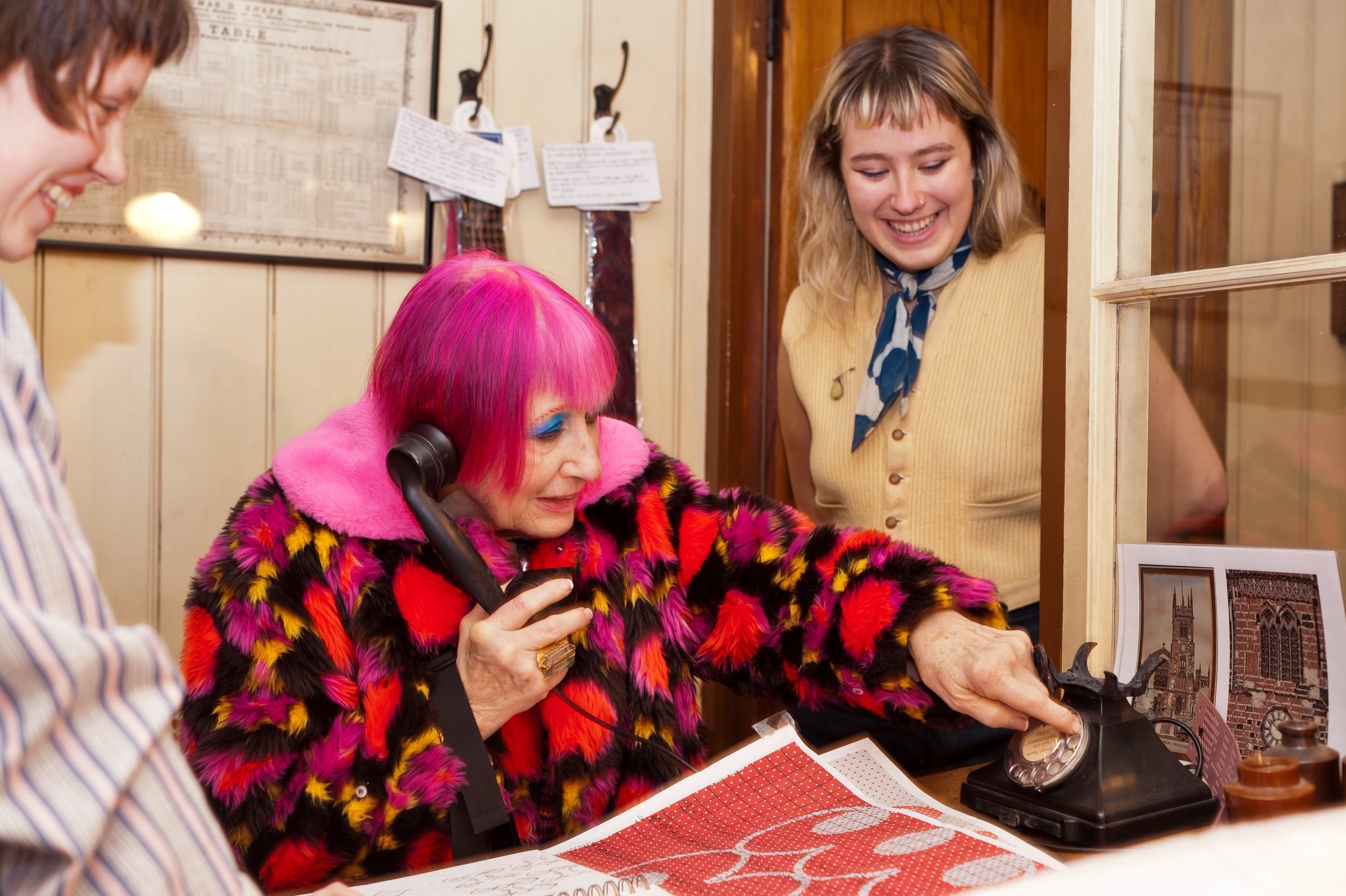Coming Soon:
The Jacquard studio
A new Jacquard Studio will open this summer at the Silk Museum in Macclesfield. The bespoke space is being created to display the museum’s unrivalled collection of pattern books in environmentally suitable conditions.
Celebrating Pattern
A new display in the Silk Museum
The pattern books are from many of the silk mills that existed across the region and show the detailed designs that were created here. They are filled with samples of textiles and designs. Many feature scenes including animals and landscapes, as well as the more traditional patterns such as paisley and the striking Macclesfield Stripe. They are a record spanning over a hundred years documenting the designs created in Macclesfield for the textile industry.
The Jacquard Studio will provide a new custom-designed space for people to see these unique items on display for the first time. The Silk Museum is in the original purpose-built School of Art, in Macclesfield which was established to train designers to meet the high demand for luxury silk products with exceptional designs for a global market. The new Jacquard Studio will be located in the museum, funded by: National Heritage Memorial Fund, Arts Council England’s Capital Investment Fund and The Pilgrim Trust, and project managed by Creative Heritage Limited.

The collection is noteworthy.
iconic fashion designer, Dame Zandra Rhodes, DBE, visited a few months ago and showed great interest in the pattern books.
Senior Conservator Mark Furness
Conserving the collection
Mark Furness, a senior conservator, who works with John Rylands Research Institute and Library, part of the University of Manchester, has been leading on a conservation study.
Mark has been working to assess the collection of pattern books for any damage. This involved looking at hundreds of books checking for issues such as red rot, which is caused by external pollution affecting the leather covers creating a red dust.
Mark is also weighing the books as they are large and heavy, with some weighing in at 16 kilos. This is all important as when the books are on display or in store, the studio need to be able to take the weight of this collection.
Mark says: “Conservation techniques work on the theory of minimum intervention. We aren’t looking to hide or reverse the ageing process of what happens to an item. The books have a history and signs of use. It is about getting the balance of making sure that they are stable and still accessible in the future and that they can be enjoyed for years to come.”
The Cartwright and Sheldon Archive
Alongside the books, items relating to the Cartwright and Sheldon archive will also be on display for the first time. Cartwright and Sheldon were the last owners of grade II listed Paradise Mill, which is now part of the museum.
The Cartwright and Sheldon archive contains materials from the last two families that ran Paradise Mill from 1912 until it closed in 1981, before it became part of the museum. The archive has been described by conservators and academics as a ‘unique social history resource’.




